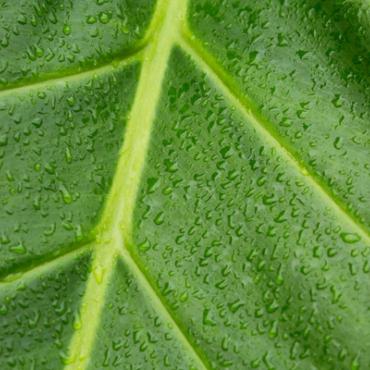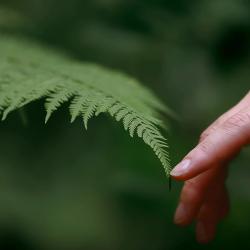Completing necessary site investigations and studies or assessments to thoroughly understand the land and topography and ensure a successful design and construction process. The agencies and authorities with the jurisdiction of the project include:
- The state of Hawaii, Department of Land and Natural Resources (DLNR), State Historic Preservation Division (SHPD)
- City and County of Honolulu, Department of Planning and Permitting
- State of Hawaii, Department of Health
The Project site is currently zoned for agricultural use (AG-1). Under Chapter 205 of the Hawaii Revised Statutes (HRS), a Special Use Permit (“Special Permit”) allows the use of land within state agricultural districts for “certain unusual and reasonable uses…other than those for which the district is classified”.Pursuant to HRS Chapter 205 and the provisions of Act 55, solar energy facilities that occupy more than 10% of a parcel, or 20 acres of land, with class B or C soils are a permitted use within an agricultural district, with the issuance of a Special Permit. The remainder of the property not otherwise occupied by the project, constituting the majority of the parcel, will continue to be used by Villa Rose for agricultural use as currently zoned.
Additionally, the City and County of Honolulu’s Land Use Ordinance (LUO) will require a Conditional Use Permit. As noted above, the Project site is currently zoned for agricultural use (AG-1). The LUO allows “utility installations” in all zoning districts, but the LUO will likely consider the proposed Project to be a “Type B” utility installation, which requires a Conditional Use Permit (CUP) minor for construction in the AG-1 district.
Boundary and topographic surveys of the property, environmental, cultural, and archaeological reviews, and initial outreach meetings have all been completed. Based on that prior work, the NSNB Agricultural Committee has previously voted in favor of supporting the Project’s Special Use Permit application as a supplemental use to Villa Rose’s existing egg farm facility. The Special Permit will be administered by the City and County of Honolulu, Department of Planning and Permitting (the AHJ for this project). The AHJ has previously approved four permits related to Villa Rose’s phase I construction at the site and they are supportive of Villa Rose’s long-term development plans for the site.
The conditional use permit will be administered by the City and County of Honolulu, Department of Planning and Permitting (DPP), under a separate application from the Special Permit above.
A glint and glare analysis will be submitted, along with the site plans, to the Federal Aviation Administration for verification that the proposed Project complies with the requirements set forth in FAA Advisory Circular 150-5370-2 “Operational Safety on Airports During Construction”.
An archaeological inventory survey has been completed and will be submitted to the State Historic Preservation Division (SPDH).SPDH review of that report will run in parallel with the Special Permit review above.
A flora and fauna study has been completed and a notice of intent will be submitted to the Hawaii Department of Land and Natural Resources, Division of Forestry and Wildlife.
A National Pollutant Discharge Elimination System (NPDES) permit will be required for the proposed Project to ensure that the Project plan complies with the Clean Water Act. This permit is administered by the State of Hawaii, Department of Health, Clean Water Branch. The application will be filed prior to the start of construction and not less than 6 months before the commercial operation.
A building permit will be required from the City and County of Honolulu. The application will be filed by the installing contractor, not less than 150 days prior to the start of construction.
An electrical permit will be required from the City and County of Honolulu. The application will be filed by the installing contractor, not less than 150 days prior to the start of construction.
Our team’s preliminary environmental assessment of the site, including potential short and long-term impacts associated with or resulting from the proposed Project, are as follows:
Natural Environment
•Air Quality – There is no emission from any of the components into the air. The solar module materials are enclosed and do not mix with water or vaporize into the air. During operation solar electricity power plants produce zero emissions, thus the proposed Project is expected to improve the long-term air quality. During construction, dust may be created due to soil disturbance, but the Project plans will seek to mitigate that by following the existing contour of the land (ie-minimize grading).
•Biology – The proposed site is currently being leased by Villa Rose for farming. As a result, very minimal disturbance to flora/fauna/vegetation is anticipated. Additionally, the site is not listed by US Fish and Wildlife Service (USFWS) as critical habitat for any threatened or endangered species. See the copy of the previously completed biological survey report uploaded as “KaukonahuaSolarP1V1_2.6.4_Biological Survey”.
•Climate – Because solar electricity power plants produce zero emissions, the proposed Project is expected to make a positive impact on the long-term climate.
•Soils – Preliminary soil searches indicate an Oxisols soil order classification, with acidic pH (< 5.8) and low shrink/swell potential. The Land Study Bureau characterizes the soil as productive for agriculture. However, the Project is not anticipated to have an impact on the fertility or nutrient-holding capacity of the soil, and the dual-agricultural-use of the site (with sheep or chicken grazing within the array footprint to maintain vegetation) will continue to allow the land to be productive from an agricultural perspective while also producing clean power.
•Topography and Geology – The topography of the land is relatively flat, with less than a 20-foot drop in elevation across the proposed site area. Thus, the existing slope is estimated to be no more than 1-2% within the proposed Project site. See copy of the previously completed topographic surveyuploaded as “KaukonahuaSolarP1V1_2.6.4_Topographic Survey”. Land Regulation
•Land Uses – The land is currently zoned for agriculture (AG-1) but that classification allows for the proposed Project use by CUP and Special Permit.•Flood and Tsunami Hazards – The proposed site is not in a flood or tsunami zone
•Noise – Ground-mounted solar inverters and transformers make a humming noise during the daytime only when the array generates electricity. At 50 to 150 feet from the boundary of the array, any sound from the inverters is inaudible. Both the inverters and the batteries have been located central to the site plan footprint so as to ensure any audible noise at the perimeter is mitigated.
•Roadways and Traffic – Short-term, the proposed site traffic will be heightened during the anticipated 12-month construction window. Construction practices will vary among different contractors and may change due to project management goals and weather. However, as a general rule, on-site working hours will be limited to between 7 am to 5 pm, or as specified by the authority having jurisdiction, as a mitigation measure so as not to impact other local traffic in the evening. Construction vehicles will vary from day-to-day activities but, overall, will consist of flatbed tractor-trailers, enclosed tractor-trailers, box trucks, dump trucks, and concrete trucks. Not all of those trucks would be on-site at the same time, nor will they be required every day. Once material deliveries are complete, the volume of construction traffic decreases significantly. Long-term, during the operation of the Project, the only traffic will be from light vehicles for periodic maintenance, on a scheduled or as-needed basis. The proposed site is located on a primary road running to the northwest of the island, which was previously used by the Dole plantation to accommodate all of their required operations traffic at the local sites. Thus, it is capable of handling the described traffic pattern and vehicle sizes without any long-term impact.
•Utilities – There is an existing 46 kV line present along Kaukonakua Road (where the POI is shown on the site plan under Section 2.5.3). The site is approximately 4 miles from the closest substation located at 723 Neal Ave.
•Socio-Economic Characteristics – The EPA EJ Screen tool shows the census tract where the Project site is located to have a population of 1,915, with 42% of residents being a minority and 22% being low-income. The proposed Project will be another prong in Villa Rose’s long-term strategy to highlight sustainable local agriculture and create an eco-tourism draw that will benefit the community, similar to what Dole has done with their site on Kaukonahua Road which also promotes tourism to the area.
•Aesthetic/Visual Resources – Long-term, Villa Rose plans to create an interpretive center where visitors can learn about sustainable farming. As such, the proposed Project will have a positive impact by providing an aesthetically pleasing visual for how renewable energy has been incorporated into the larger facility and community. There are no residential properties with views of the proposed Project.
•Solid Waste – Solid waste produced during construction will be removed by regulated haulers and disposed of at regulated facilities. Once construction is complete, there will be no solid waste generated by the facility.
•Hazardous Materials – Most of the materials used in a solar facility are glass and metal, which are reusable and recyclable. However, to ensure no trace elements are released into the environment, all materials will be removed and disposed of off-site at an appropriate facility. The owner/operator will maximize recycling and reuse and will work with manufacturers, local subcontractors, and waste firms to segregate materials accordingly. If there is no possibility for the reuse of the solar modules or batteries at the time of decommissioning, then those materials will be returned to the manufacturers for appropriate recycling/disposal.
•Water Quality – The batteries will all be housed in temperature-controlled storage containers to ensure no contact with stormwater is possible. The panels and other associated equipment contain no chemicals that can be washed away by stormwater.
•Public Safety Services – Warning signs and signage providing key contact information will be mounted on the fences and access driveway. The access roads will be designed to accommodate emergency vehicles. Gates with Knox Box will be located at the entrance to the solar array to provide access for public safety workers and emergency responders. A preliminary emergency response plan will be provided to the authority having jurisdiction prior to the start of construction and on-site training will be conducted when the facility is ready for operation.
•Recreation – There will be no on-site recreation associated with the proposed Project. However, as noted previously, Villa Rose intends to highlight the array in their long-term educational plans for eco-tourism at the site
•Potential Cumulative and Secondary Impacts – Construction of the proposed Project would result in short-term impacts during construction that are intermittent, temporary, and localized. Construction activities would generate noise and create fugitive dust, but those activities would be limited in duration. Rain events during construction may create erosion, but mitigation measures will be incorporated in accordance with the Stormwater Pollution Prevention Plan that will be filed. None of the impacts identified would alter the character of the surrounding area. Additionally, because the lease revenue from this Project will support a local business that is increasing local egg production on the island, it will provide cumulative benefits far beyond serving as a clean source of energy. Villa Rose is investing 10 years of planned construction into the site and their facility will be the first modern integrated layer farm built on the Hawaiian Islands in over 50 years. Because the Villa Rose facility seeks to use local grain production, it will support other agriculture on the island and create jobs at every level of the process. That vision for a locally sourced supply chain avoids the high cost and negative carbon impact of shipping materials to the island from abroad. Villa Rose’s facility is designed to offer cage-free facilities and supports the environment by growing grains, raising animals, collecting what they produce, and returning the nutrients back to the earth. The proposed Project, in conjunction with Villa Rose’s investments at the site, will create jobs, yield lower costs to local consumers, provide clean energy, and further sustainable agriculture in the State of Hawaii.
Nexamp is committed to carefully protecting any cultural or historic sites identified during the study process. An archaeological inventory survey has been completed and will be submitted to the State Historic Preservation Division (SHPD). The full report is available upon request.
The project footprint will be no more than 80 acres located north of the existing egg farm. The property has a natural vegetative buffer of grass berms that surround the entirety of the project area. We anticipate that these berms will screen the project from vehicular and pedestrian traffic along Kaukonahua Road and from immediately surrounding properties. Kaukonahua Solar intends to preserve these berms throughout the life of the project.
Villa Rose purchased the property in December 2013 with the vision of creating a sustainable, locally-based egg farm on the Island of O’ahu. The land, previously used for agriculture as part of the former Dole plantation, has an existing access road that bisects the property and is otherwise flat and open. The existing land contour makes it ideal for solar, as very little grading would be required for construction, thus minimizing soil disturbance. During 2016-2017, Villa Rose began consultation with local authorities for permitting and discussions with community groups about their long-term plans. The initial concepts for the egg farm included solar, as the egg farm production facility was designed to utilize renewable energy and operate as an off-grid system. As a result, discussions envisioning the dual use of the property for both solar and agriculture date back to 2016. Permits for the first phase of the egg farm, including canopy-mounted solar photovoltaics integrated into the facility, were granted in December 2017. Prior to beginning construction on that first phase, Villa Rose engaged a team of local consultants to complete all applicable due diligence, including any required environmental, cultural, or archaeological review. The permitting authorities and community welcomed Villa Rose’s long-term plan for the site, as the farm will bring locally grown products directly to the markets of Hawaii while also utilizing a sustainable agriculture plan. The first phase of construction for the egg farm was completed in 2019. This project builds on the vision laid out by the Villa Rose team, siting a renewable energy resource on portions of the property not required for the egg farm, while also incorporating livestock such as chicken or sheep within the footprint of the array to sustainably maintain ground vegetation. The property is currently zoned AG-1 (Agricultural), which allows for the Project’s proposed use with a Conditional Use Permit (CUP) and Special Permit. To ensure consistency in the proposed plans and messaging, our team has engaged the same local consultants previously utilized by Villa Rose for initial discussions regarding due diligence, permitting, and community consultation. The required discretionary and non-discretionary permits and approvals required for the project are outlined in Section 2.6.3.
A Phase I environmental assessment, site survey, and biological, cultural, and archaeological reviews have all been completed. The estimated 12-16 month timeline required for consideration of the permit applications by the local authorities, including but not limited to public hearings, peer review, and revisions, is shown underlines 18 and 22 of the GANTT chart shown under Section 2.14.1.








